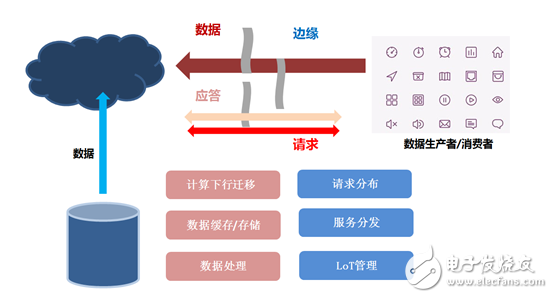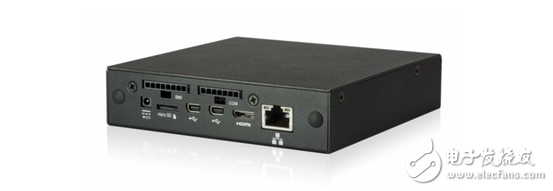Internet technology has developed rapidly in the past decade. Due to the “explosive†growth of online application services, the demand for massive data processing is increasing.
The concept of “cloud computing†was first proposed. Users can access the cloud data center through terminal devices such as computers, laptops, and mobile phones. They can calculate according to their own needs and experience 10 trillion operations per second. But gradually, even The cloud that is high above can't cope with this huge amount of data. People can't help but think, why not process the data near the data generation before the data is uploaded to the cloud? Thus, the concept of "edge computing" has also been proposed, and we complement cloud computing through many forms of computing at the edge of the Internet of Things (IoT) solution architecture.

Edge computing has important implications for the IoT scenes of the entire smart city and our daily lives.
Edge computing brings faster transfer and response speeds. For the IoT system that is directly used in people's livelihood, municipal administration, and even industry and agriculture, efficiency and speed mean everything. Especially the sophisticated production Internet of Things, can not tolerate the delay rate of civilian terminals. The idea that cloud computing is transmitted to the cloud and then returned to the terminal is obviously not as fast as the principle of edge computing. Another big advantage of edge computing is that it provides the computing services required for high-speed interaction for smart devices. The computing requirements of smart products are extremely large. If they are squeezed into the cloud, the computing power and transmission capacity will be a great test.
Edge computing devices have rich application scenarios in smart cities:
Urban pavement monitoring
Sensors are installed on the lampposts on both sides of the road to collect urban road information and detect environmental data such as air quality, light intensity, and noise level. When the street lamp fails, it can be immediately fed back to the maintenance personnel.
Elevator operation
Install sensors in the elevator of the building, collect basic information such as the number of passengers carried by the elevator, and run time, and upload the information to the cloud platform. Through statistical analysis, the elevator operation can be optimized and the work efficiency can be improved. When the elevator operation fails, it can also locate the problem in time to ensure the safety of personal property.
Automatic driving field
Edge computing devices can play an important role in the process of information collection, processing, and fast transmission. At the same time, edge computing technology allows vehicle drivers to immediately receive warnings from other vehicle drivers when a hazard is likely to occur.

In the important scene of the Internet of Things - smart community intelligent express terminal system, edge devices are gradually exerting strength. The intelligent express terminal system is divided into two parts: the intelligent express cabinet and the central server. The former is a device based on the Internet of Things, which can identify, temporarily store, monitor and manage items (smart items); the latter can uniformly manage each intelligent express cabinet of the system (such as information of express terminals, information of express mail) , user information, etc.), and comprehensive analysis and processing of various information. After the courier delivers the courier to the designated location, it only needs to store it in the smart courier. The system will automatically send a text message to the user, including the pickup address and verification code. The user enters the verification code before arriving at the terminal at a convenient time. The shipment can be retrieved.

Based on embedded technology, the intelligent express cabinet collects data through various sensors such as RFID and camera, and then transmits the collected data to the controller for edge calculation processing. After processing, the entire terminal is operated through various sensors, including GSM. SMS reminder, RFID identification, camera monitoring and more.
As a member of the Edge Computing Industry Alliance (ECC), VIA has been developing IoT technology and related smart devices for many years. Nowadays, VIA brings the research results of edge computing to its new generation of embedded devices, which is believed to help IoT applications such as smart express cabinets, smart vending terminals and intelligent information distribution systems.
Floating Ball Level Controller
The floating ball liquid level controller is composed of floating ball, plug rod, etc. It is installed on the top of the container through the connecting flange, and the floating ball floats on the liquid level according to the principle of equal volume of liquid. When the liquid level of the container changes, the floating ball also moves up and down. Due to the magnetic effect, the dry spring of the floating ball liquid level controller is magnetically attracted to change the liquid level position into an electrical signal, and the actual position of the liquid is digitally displayed through the display instrument, Floating ball liquid level controller to achieve remote detection and control of liquid level.
The floating ball liquid level controller is designed according to Archimedes' buoyancy principle. When the liquid level of the container changes, the floating ball also moves up and down. Due to the magnetic effect, the dry reed of the floating ball liquid level controller is magnetically attracted, so that the resistance in the sensor changes linearly, and then the converter converts the change of the resistance value into 4mA ~ 20mA standard DC signal output, Realize the remote detection and control of liquid level.
Floating Ball Level Controller,Liquid Level Controller,Alarm Level Measurement Controller,Floating Ball Liquid Level Measuring Controller
Taizhou Jiabo Instrument Technology Co., Ltd. , https://www.taizhoujiabo.com